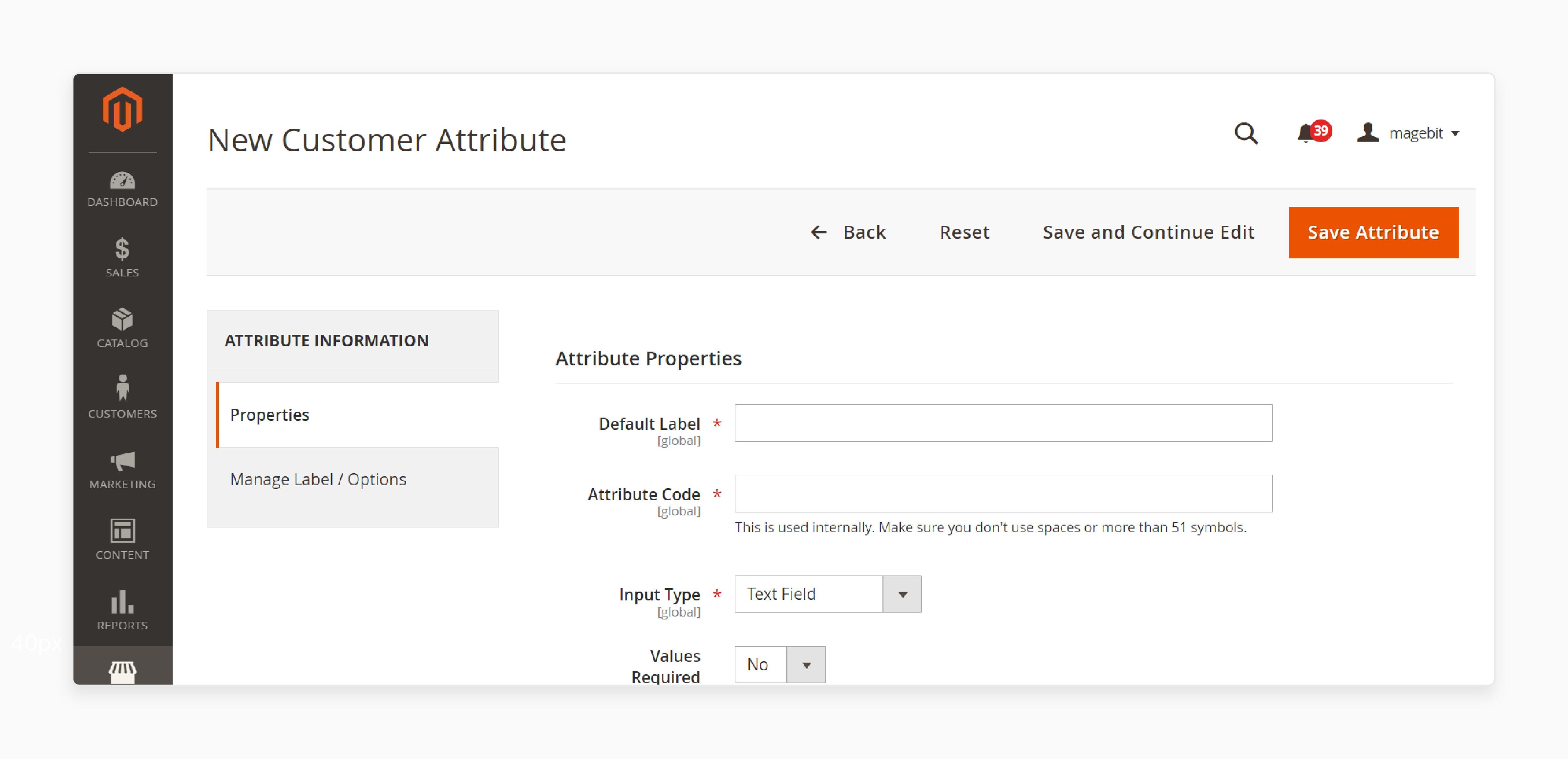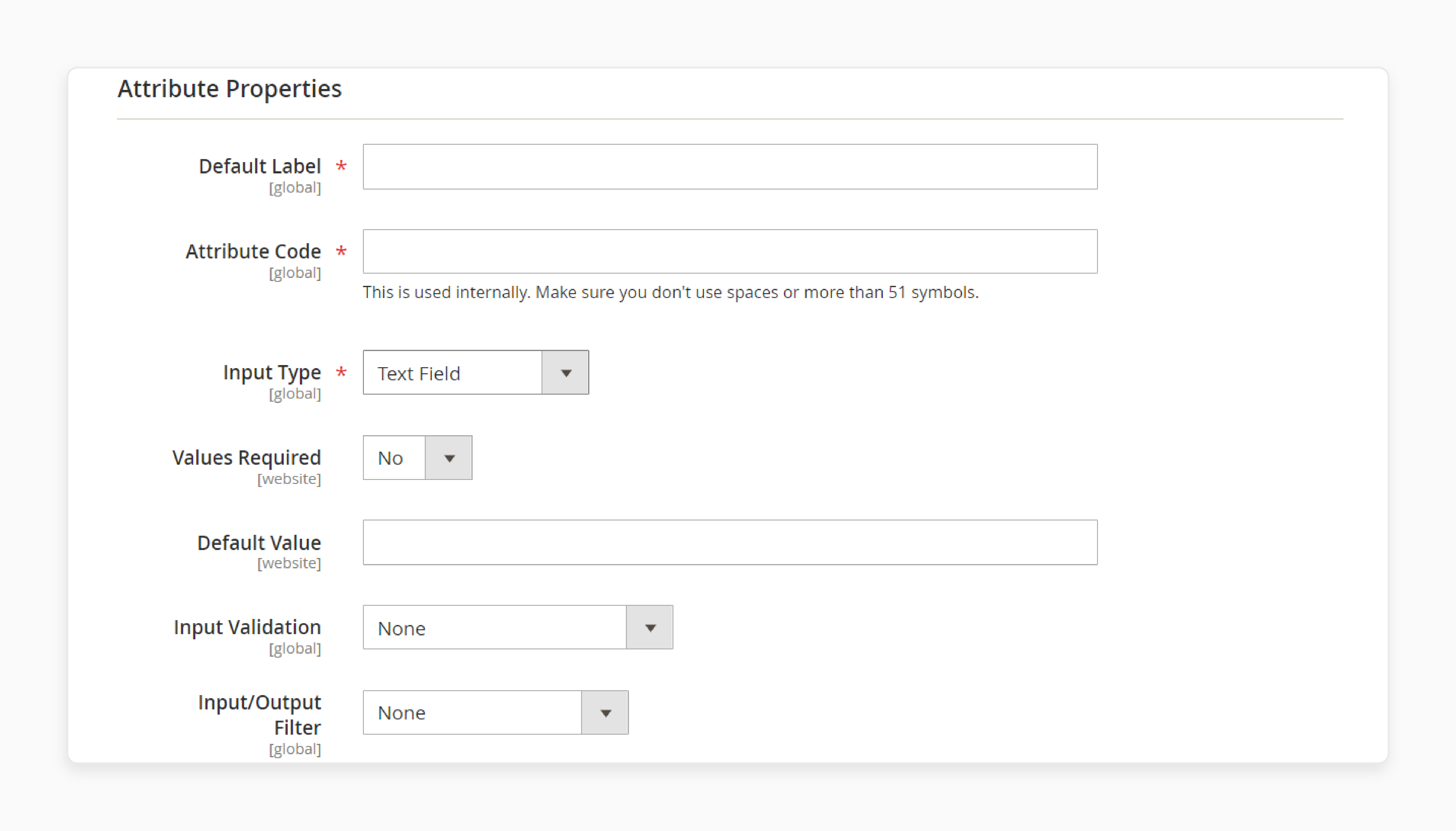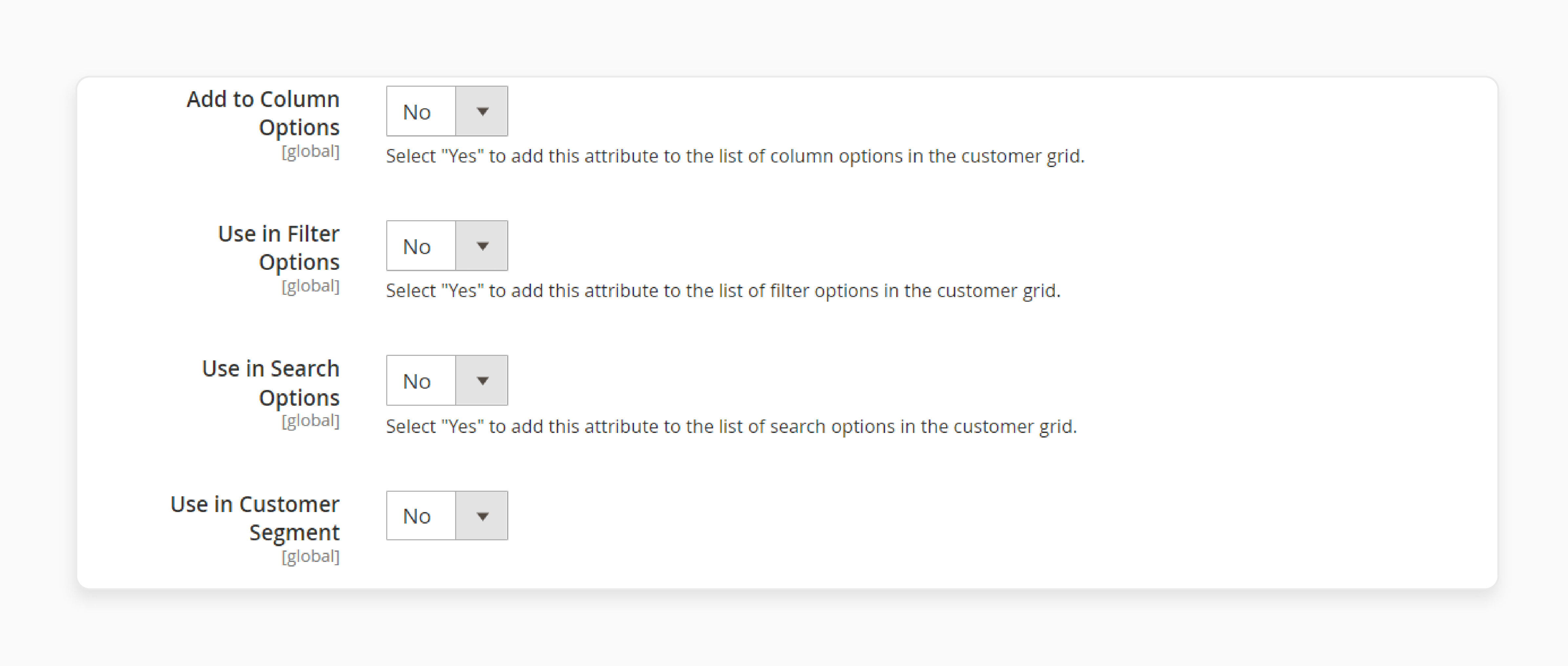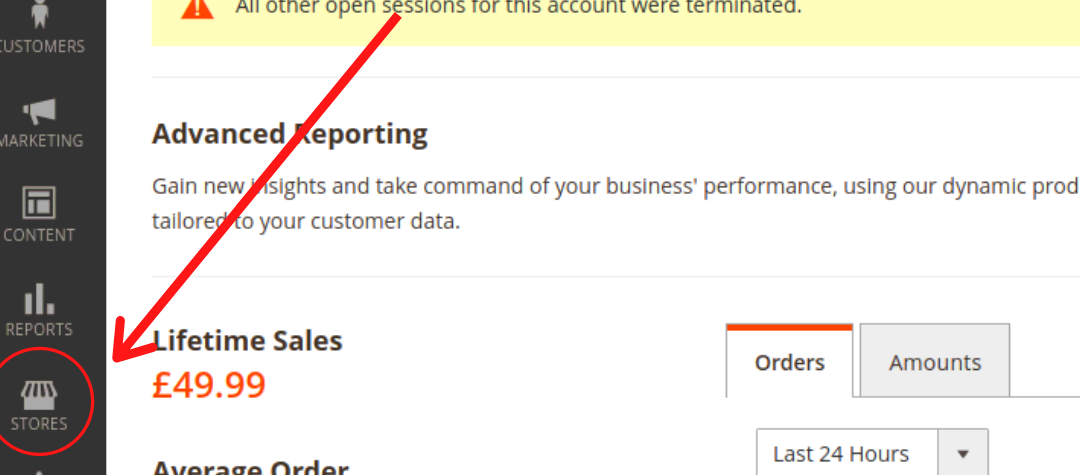Wondering how to gain insights into your customer’s preferences and behaviors? Magento 2 Customer Attributes empower businesses to gather customer data. It enhances their profiles beyond basic details, such as name and address.
This tutorial will cover the steps to gain insights on customers in Magento 2.
Key Takeaways
- Learn how Magento 2 customer attributes improve understanding of customers.
- Explore why customizing customer data is important for targeted marketing.
- Discover step-by-step instructions to create custom attributes.
- Explore different Magento extensions and plugins to personalize user experiences.
- Gain insights into troubleshooting tips to boost sales.
- What are Magento 2 Customer Attributes?
- Importance of Customer Attributes for Different Stakeholders
- Benefits of Magento 2 Customer Attributes
- 6 Steps to Install Magento 2 Customer Attributes
- Top 5 Customer Attributes Extensions and Plugins in Magento 2
- Troubleshooting Tips to Manage Attributes on Magento 2
- FAQs
- Summary
What are Magento 2 Customer Attributes?
Magento 2 Customer Attributes are customizable fields. It stores additional information about customers.
Magento 2 customer attributes enable merchants to create a more personalized shopping experience. According to Epsilon, 80% of shoppers buy when brands offer personalized experiences.
Also, 85% of consumers said personalized homepage offers influenced their purchase decisions. Magento 2 supports various input types for these attributes. It ensures flexibility in the data collection of customer accounts.
Importance of Customer Attributes for Different Stakeholders
1. Marketers
- Marketers can utilize customer attributes for better segmentation, personalization, and targeted campaigns. It improves conversion rates and customer experience.
- For example, a sports equipment retailer might segment customers by:
- Preferred sports
- Skill level
- Frequency of purchases
- Average order value
- Geographic location
- With these segments, marketers can:
- Create personalized landing pages. They show relevant products and content. It is based on a customer’s interests and skill levels.
- Store owners make email campaigns that promote local sporting events. It offers loyalty rewards or discounts used to each customer’s purchasing habits.
- It goes beyond targeting demographics and creates a variety of customer attributes. As a result, customers are more likely to find value in marketing communications. It leads to more engagement.
2. Customer Service
- Customer service teams use customer information to understand preferences and resolve issues. It includes tracking orders and suggesting products based on past purchases. It not only fixes problems but also makes shopping better for the customers.
- For example, Netflix provides details on what customers watch and their subscriptions. It helps to solve problems. They speed up the solving of issues, such as billing or account problems.
- It helps give personalized advice and fix technical problems. This ensures that customers enjoy their viewing.
- Using customer attributes help service teams in many industries. It lets them give fast, smart help and build better relationships. It predicts what customers want and grows businesses.
3. Business Owners
- Business owners utilize customer attributes to drive strategic decisions. It is based on detailed insights into customer preferences and behaviors. This empowers them to meet customer needs and expectations.
- For example, Spotify is a subscription-based service. It analyzes users’ listening habits to make personalized playlists and recommend new music. This enhances users’ satisfaction and keeps them satisfied.
- Retail giants like Amazon use your customer purchase history. They use browsing behavior to suggest products and make shopping faster. It also improves customer engagement through targeted promotions and recommendations.
- Businesses in different sectors use customer attributes. They use them to tailor their offerings and improve customer experiences. It drives growth and trust among customers.
4. Developers
- Developers play an important role in utilizing customer attributes within Magento. It enhances:
- Functionality
- Generates detailed reports
- Integrates smoothly with third-party systems.
- Attributes are structured to make sure that customer data is easy to obtain and handle. For example, by combining customer data with a CRM system.
- Developers can create one platform and bring together customer interactions and preferences. It makes customer management simpler and improves all business operations.
- Developers can also use attributes to customize user experiences. They can optimize workflows using data-driven strategies and improve system performance. It also supports business growth in the competitive .
Benefits of Magento 2 Customer Attributes
1. Understanding Customer Data
- Customer attributes are instrumental in enhancing customer experiences through their offerings. It lets merchants gather valuable insights into consumer behavior.
- For example, a beauty subscription box service like Birchbox uses customer attributes. These include skincare and hair type, as well as color preferences. They use these details to curate personalized boxes each month.
- Birchbox ensures that subscribers get products that match their needs and preferences. It boosts satisfaction and encourages subscription renewal.
- Personalizing customer experiences through Magento can done:
- Product Recommendations: Magento gathers data on what customers like. It includes:
- Their browsing history
- Past purchases
- Using smart algorithms, it suggests products that match each customer’s interests. For example, if someone buys outdoor gear. Magento might suggest camping equipment or hiking boots.
- Customized Homepage: Using customer details, Magento can change how the homepage looks. For instance, a person into electronics might see new gadgets featured. While someone into fashion might see trendy clothes and accessories.
- Email Campaigns: By grouping customers on their details, businesses can send them emails. For example, shoppers are interested in eco-friendly products. They might get emails about sustainable goods or green initiatives.
- Product Recommendations: Magento gathers data on what customers like. It includes:
- The approach boosts customer loyalty. It enables them to refine their products and marketing well. Store owners use them to deliver personalized experiences that resonate with customers. It drives engagement and long-term success.
2. Gather Specific Customer Details
- Businesses can collect important customer information. It includes purchase history and demographic data through customer attributes. Customer attribute fields to collect and analyze customer information to help store owners.
- Businesses can:
- Find cross-selling and upselling opportunities. For example, a customer often buys running shoes. They might want running clothes or fitness trackers.
- Store owners can predict future purchases of their customers. They can analyze past buying patterns and let them anticipate the need to restock or upgrade.
- The extension develops models for customer lifetime value. The data helps businesses find their most valuable customers. It lets them utilize retention strategies accordingly.
- Gathering customer details improves inventory management. Merchants understand what customers like and how often they buy. This lets businesses optimize stock levels and avoid overstocking or stockouts.
- For instance, an electronics retailer might use purchase history data to:
- Recommend compatible with Magento 2 accessories for previously purchased devices.
- Offer timely upgrades when new models of their favorite products are released.
- Provide personalized warranty or service options based on a customer’s usage patterns.
- Businesses can create a more smooth and personalized shopping experience. It increases customer satisfaction and repeat purchases.
3. Targeted Marketing with Customer Grouping
- Businesses can use customer attributes to segment their customer base. They can utilize marketing to specific preferences and behaviors.
- For example, an online bookstore using customer details to target their marketing.
- The store collects information on what genres, authors, and how often customers read. They group customers into categories like “Mystery Lovers,” “Sci-Fi Fans,” and “Regular Readers.” For Mystery Lovers:
- Send emails about new mystery books
- Give special discounts on mystery book sets
- Recommend “Top 10 Mystery Picks” based on their likes
- Invite them to online book clubs or Q&A with mystery authors
- By understanding these preferences, businesses can increase engagement and conversion rates. Customers receive offers that match their tastes and shopping habits.
- The marketing approach makes customers happier and saves money. It does this by focusing on campaigns likely to give higher returns.
- In the end, grouping customers by similar attributes helps businesses. It allows them to send better marketing. This helps build better customer relationships and drive business growth in competitive markets.
4. Flexible Management of Additional Fields
- Magento 2 offers businesses a great deal of flexibility. It allows them to add extra fields to the registration page.
- The flexibility is a significant help for industries such as automotive parts retail. They can improve customer interaction by adding features. Industries can add customer attribute reviews and product ratings to their product pages.
- For instance, a wine shop might ask customers to fill out fields about their favorite wine types. The flavors they enjoy, and how much they spend. The information helps the store to suggest special wine deals.
- The management does this by encouraging customer feedback. It also supports informed purchasing decisions. Potential buyers can assess product quality and reliability through peer reviews.
- Businesses can utilize Magento 2’s capabilities to customize and manage these extra fields. It will build trust and boost sales. It allows businesses to:
- Collect industry-specific details important for their market. For instance, a furniture store might ask about room sizes or style preferences.
- Improve product suggestions by learning specific preferences. A bookstore could ask about favorite genres, authors, or how often someone reads.
- Make customer service better by having useful info on hand. For example, a tech company might gather details on a customer’s devices or tech skills.
- Fine-tune marketing by using custom fields to create customer groups for focused campaigns.
5. Enhanced Functionality with Extensions
- Magento 2 extensions are important to expand an e-commerce store. The advanced features include:
- Strong reporting tools
- Smooth integration with CRM systems.
- For instance, If a top customer did not buy anything in 3 months. The CRM can send a special email with a personalized offer. It can be based on what they have bought before. This helps keep customers interested before they stop buying.
- Integrating a CRM with Magento 2 can improve how businesses manage:
- 360-degree Customer View: The integration lets businesses see all customer interactions. It includes:
- Purchase history
- Support tickets
- Emails
- Social media interactions.
- Predictive Analytics: The CRM can predict future customer actions for more sales.
- Automated Workflows: Using customer details and actions, the CRM can automatically do things. For example, if a top customer hasn’t bought anything in 3 months, it can send a special email to bring them back.
- Empowering Sales Teams: When a customer asks for help, the sales team can see their whole profile. This helps them give more informed and personal help.
- 360-degree Customer View: The integration lets businesses see all customer interactions. It includes:
- By using this integration, businesses can improve their customer relationship strategies. It will help build stronger connections and track customer behavior in real time.
- The extension enables proactive engagement and targeted promotions. Magento 2’s extension ecosystem empowers businesses. It helps them to optimize their operations and improve customer engagement.
6 Steps to Install Magento 2 Customer Attributes
Step 1: Access Attribute Label Properties

- Go to Magento Admin.
- Navigate to Stores > Attribute Properties > Customer.
- Click Add New Attribute.
Step 2: Set Up Attribute Properties

- Fill in attribute information like the default customer attributes label and attribute code.
- Choose the input type.
- Select a customer input/output filter.
Step 3: Configure Attribute on the Order Grid

- Decide if the attribute should appear in the customer grid.
- Set the filter and search options.
- Choose if the attribute can be used in customer segments.
Step 4: Adjust Storefront Properties
- Enable showing on the storefront.
- Set display order.
- Choose which forms to use more customer attributes in.
Step 5: Add Labels for Store Views

- In the manage label/options tab.
- Add labels for each store view.
Step 6: Save Your Work for Attribute Usage
- Click the save attribute button.
